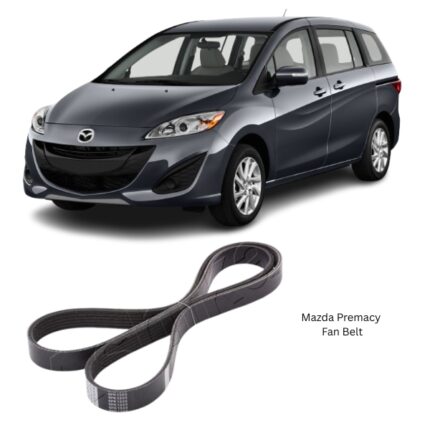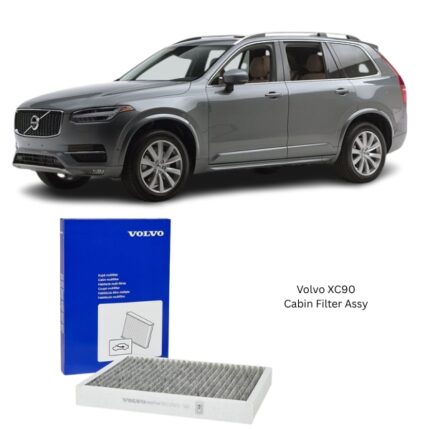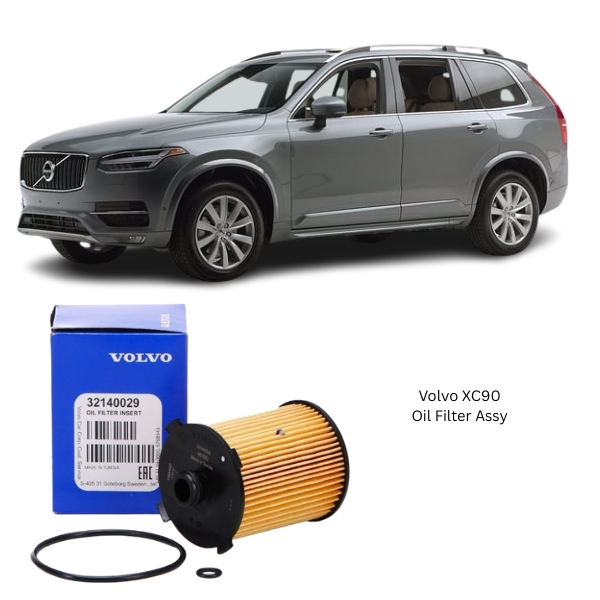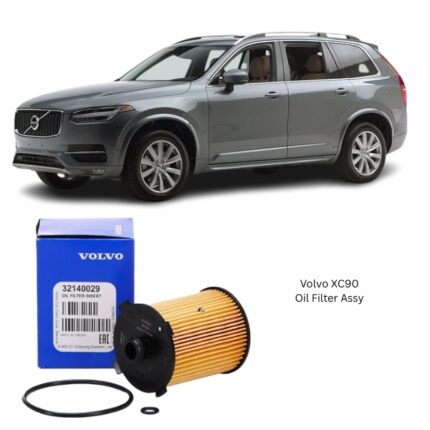Get Volvo XC90 Oil Filter Assy 32140029 in Kenya
The Oil Filter Assembly is a crucial component of an engine’s lubrication system, designed to protect the engine from harmful contaminants that can accumulate in the engine oil over time. It plays a vital role in ensuring smooth engine operation, maintaining lubrication efficiency, and prolonging engine life. Without a properly functioning oil filter, abrasive particles and sludge could circulate through the engine, causing wear, reduced performance, and costly damage.
Function and Purpose
The primary function of the oil filter assembly is to remove impurities from engine oil before it is recirculated through the engine. These impurities can include:
-
Metal particles from engine wear
-
Carbon deposits from incomplete combustion
-
Dust and dirt entering through the air intake
-
Sludge and varnish formed from oil oxidation and high-temperature breakdown
By trapping these contaminants, the oil filter ensures that only clean, well-lubricated oil flows to vital engine components such as the crankshaft, camshaft, bearings, and pistons. This filtration process reduces friction, prevents premature wear, and helps maintain consistent oil pressure.
Design and Construction
An oil filter assembly typically consists of several key parts, each designed for durability and efficiency:
-
Outer Canister:
A strong metal housing that protects the filter element and withstands high oil pressure. It is usually coated to resist corrosion. -
Filter Element:
The heart of the oil filter, made from pleated filter media such as cellulose, synthetic fibers, or a blend of both. This element traps and holds contaminants while allowing oil to pass through freely. -
End Caps and Center Tube:
These components support the filter media and ensure oil flows evenly through the element. -
Bypass Valve:
Opens when the filter becomes clogged or when oil is too thick (cold start), allowing oil to bypass the filter temporarily to prevent starvation. -
Anti-Drainback Valve:
A rubber or silicone flap that prevents oil from draining out of the filter when the engine is off, ensuring quicker lubrication upon startup. -
Gasket Seal:
Provides a leak-free connection between the oil filter and the engine mounting surface.
Types of Oil Filters
While all oil filters perform the same basic function, there are several variations in design:
-
Spin-On Oil Filter:
A self-contained unit with a metal canister, filter media, and built-in valves. It screws directly onto the engine mount. -
Cartridge Oil Filter:
Contains only the filter element without a metal housing. It is inserted into a reusable filter housing on the engine. -
Magnetic Oil Filter (Supplementary):
Incorporates magnets to attract and hold metallic particles, offering additional protection. -
High-Efficiency Oil Filter:
Uses finer media for greater particle capture, often found in performance or long-life service applications.
Operation in the Engine Lubrication System
The oil pump pushes engine oil from the sump through the oil filter assembly. As oil passes through the filter media, contaminants are trapped, and clean oil flows out toward the engine’s lubrication channels. This process occurs continuously whenever the engine is running, ensuring a constant supply of filtered oil to moving components.
Benefits of a Properly Functioning Oil Filter Assembly
-
Engine Protection:
Prevents abrasive particles from circulating, reducing wear and tear. -
Extended Engine Life:
Consistently clean oil helps avoid premature component failure. -
Maintained Oil Quality:
Delays oil degradation, allowing it to maintain its lubricating properties for longer. -
Stable Oil Pressure:
Ensures a consistent oil supply to all critical engine parts. -
Reduced Maintenance Costs:
Helps prevent expensive engine repairs caused by contamination damage.
Signs of Wear or Failure
An oil filter assembly that is clogged, damaged, or improperly functioning can lead to serious engine problems. Warning signs include:
-
Drop in oil pressure on the dashboard gauge or warning light activation
-
Dirty or sludgy oil observed during inspection
-
Unusual engine noises such as ticking or knocking due to poor lubrication
-
Oil leaks from the filter housing or mounting area
-
Burning oil smell from oil bypassing the filter and burning off on hot engine parts
Maintenance and Replacement Intervals
The oil filter assembly should be replaced every time the engine oil is changed. This is typically between 5,000 to 15,000 kilometers depending on driving conditions, oil type, and manufacturer recommendations.
Factors affecting replacement frequency include:
-
Short Trips: More frequent oil and filter changes due to condensation and fuel dilution
-
Dusty or Off-Road Conditions: Higher contaminant levels clog filters faster
-
Towing or Heavy Loads: Increased engine strain requires more frequent servicing
-
High-Performance Driving: Higher RPMs and temperatures can degrade oil more quickly
Consequences of Neglect
Failing to replace a worn or clogged oil filter assembly can lead to:
-
Oil Starvation: Blocked filter prevents oil from reaching engine parts
-
Increased Wear: Dirty oil accelerates abrasion and scoring of components
-
Sludge Formation: Contaminants accumulate in the oil, forming deposits
-
Overheated Engine Parts: Friction increases without adequate lubrication
-
Complete Engine Failure: Severe neglect can result in costly or irreparable damage
Environmental and Operational Challenges
The oil filter operates in one of the most demanding environments in a vehicle:
-
High Temperatures: Must withstand hot oil without breaking down
-
High Pressure: Endures fluctuating oil pump pressure during various driving conditions
-
Chemical Exposure: Oil additives, fuel contaminants, and combustion by-products can degrade filter media
-
Cold Starts: Thick oil must still pass through without excessive restriction
Technological Advancements
Modern oil filter assemblies have evolved for better efficiency, durability, and eco-friendliness:
-
Synthetic Filter Media: Offers finer filtration and longer service intervals
-
Improved Bypass and Anti-Drainback Valves: Provide better engine protection during cold starts and high-load situations
-
Eco-Friendly Cartridge Designs: Reduce waste by replacing only the filter element instead of the entire canister
-
High-Efficiency Filtration: Captures smaller particles down to microns in size
Best Practices for Optimal Performance
-
Replace with Every Oil Change: Never reuse an old filter with new oil
-
Use the Correct Type: Match the filter design and flow rate to the engine’s requirements
-
Check for Leaks: Ensure the gasket is seated correctly and old gaskets are removed before installing a new filter
-
Tighten Properly: Over-tightening can damage threads, while under-tightening can cause leaks
-
Inspect Oil Condition: Dirty oil after a short period may indicate filter inefficiency or engine problems
Follow us on Facebook for More Parts.





Reviews
Clear filtersThere are no reviews yet.